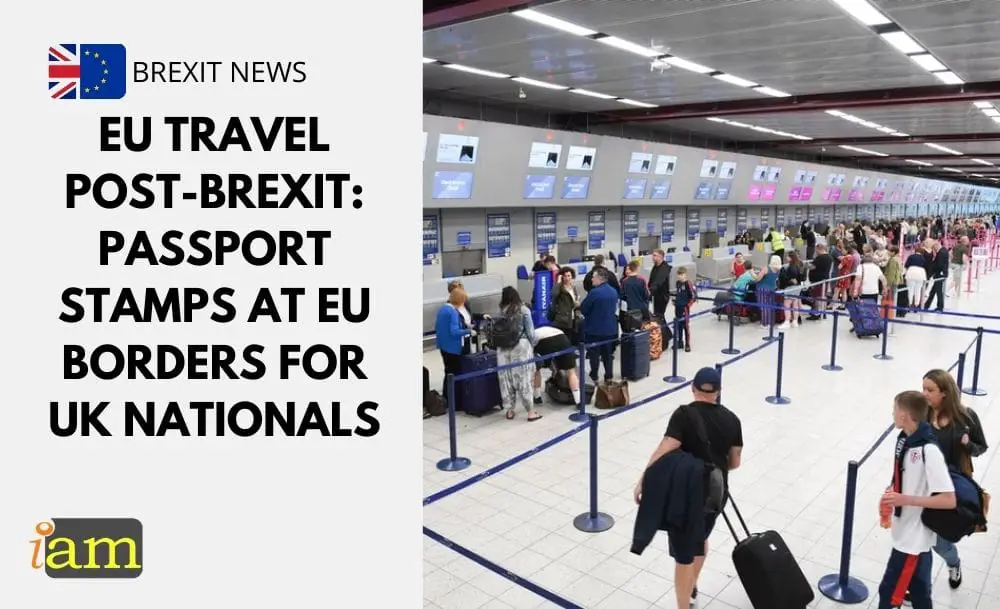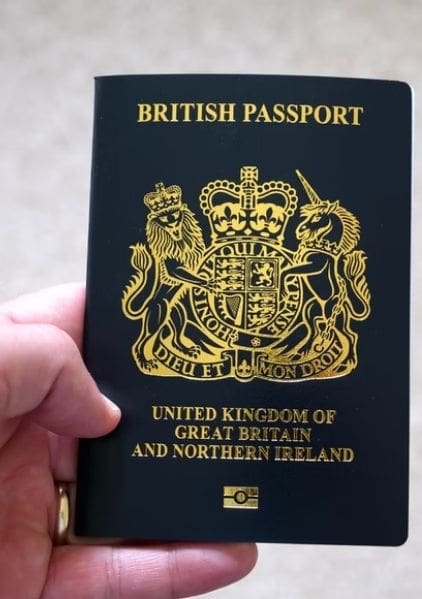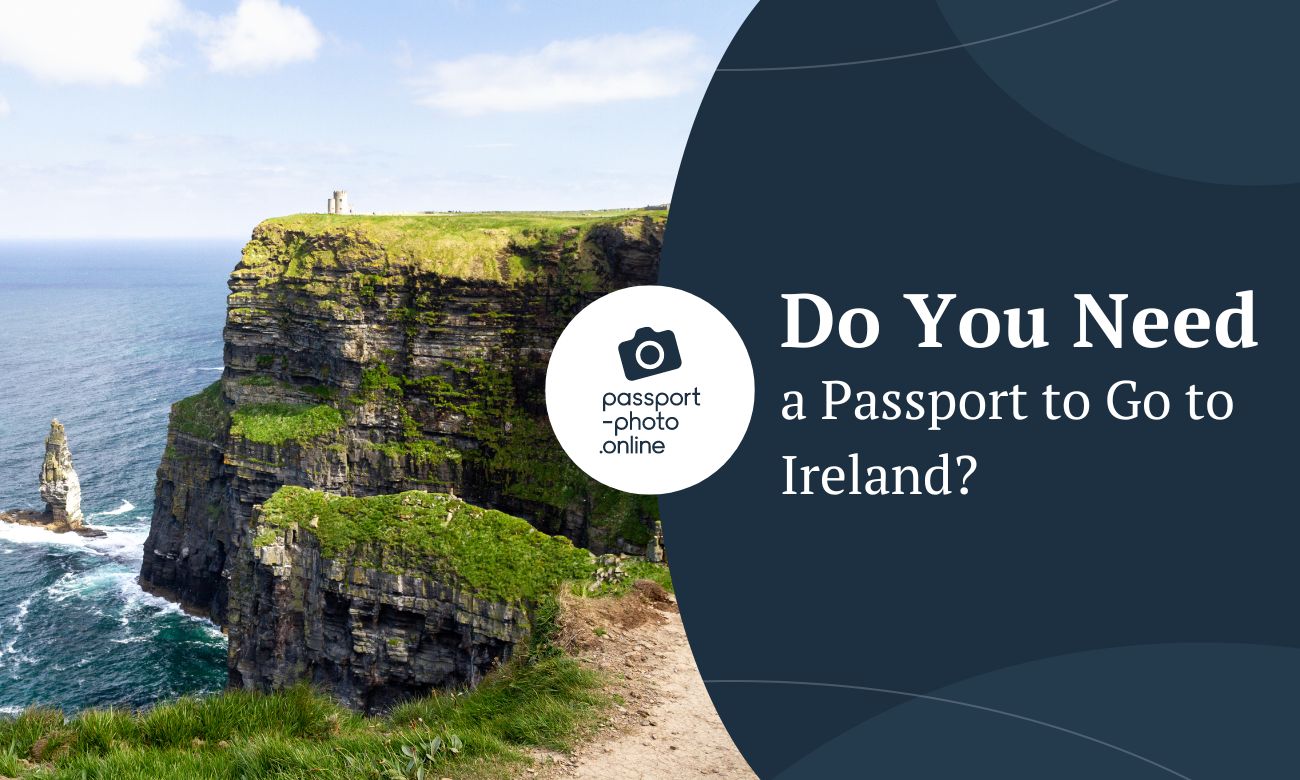EU Travel Post-Brexit: Passport Stamps at EU Borders for UK Nationals
EU Travel Post-Brexit: Passport Stamps at EU Borders for UK Nationals
EU Travel Post-Brexit: Passport Stamps at EU Borders for UK Nationals

As international borders open between the UK and the EU, travel is gradually going back to pre-pandemic days.
However, Brexit has ushered in a host of changes to travel rules especially on the issue of passport stamping. As British nationals are no longer EU citizens, British travellers have to abide by the 90 days in every 180 days rule.
British nationals who do not have EU residency status or a visa are now limited to 90 days in every 180 within the Schengen zone and the passport stamp helps to keep track of this.
The 180-day reference period is not fixed, it is a moving window, based on the approach of looking backwards.
But if you exhaust the 90 days in 180 day-period all in one go, you will have to spend 90 days outside of the Schengen Area. These rules have been in place long before Brexit.
Related articles:
Changes to EU Travel Post-Brexit

The rules for entry and exit of British passport holders into the EU have changed as checks and passport stamping now apply to British visitors to the EU. Border guards are entitled to ask British visitors for evidence of healthcare cover and sufficient funds for their trip.
Passport stamps reflecting the date of entry and exit are a way for border officials to calculate that British travellers just like other third-country nationals have not overstayed.
In order for the checks and/or stamping to take place, British passport holders are no longer entitled to use automatic e-gates on crossing EU external borders.
This is of particular concern for non-resident British nationals who visit the EU regularly to spend time in their second homes or for an extended holiday, as they have to pay special attention that border officials DO stamp their passports when they fly between the EU and the UK, inbound and outbound.
Travellers may encounter problems when visiting the EU again if there is no clear proof of entry and exit on their passports as travellers may be considered as overstayers. Penalties or punishments for overstaying vary from one EU country to another. In Spain, fines range from €500 to €100,000 depending on the severity of the violation along with temporary bans from visiting the EU/Schengen Area.
British Residents in the EU
British citizens who are residents in the EU need to be able to prove their residency status at the border. British residents travelling back to their host EU country should always hand over both the passport and the residency card or documents proving their residency rights at the border.
In the absence of such documents, the passports of British nationals will be systematically stamped to verify the authorised length of stay in the Schengen area for non-resident persons.
In the event that your passport was stamped despite presenting your residency card and explaining that you are a resident of the country, you are travelling to, British Embassies around Europe state that it will not pose a problem. Ultimately, your right to residency in your host country is proven by your residency card and that will always trump a passport stamp.
UK Passport Validity

There are also specific rules on passport validity post-Brexit.
The FCDO issued the advice on 14 October and stated:
The rules for travelling to European countries changed on January 1, 2021.
Check your passport is valid for travel before you book your trip, and renew your passport if you do not have enough time left on it.
British visitors to EU/Schengen area countries must make sure their passport was issued no more than 10 years before the day after they will leave the Schengen area, and that it is valid until at least three months after the planned departure date.
These rules do not apply to EU residency cardholders, who only need to ensure their passport is within its validity period.
What are your thoughts on this issue? Talk to us in the comment section below.
Check out the deals we have found below and tell us your travel plans.
Check out the offers and discounts from:
And because of the pandemic, don’t forget to get your travel insurance, which will cover you for flight disruptions and pandemic related matters.
IaM can help with your visa application to the United States, the UK & other countries
If you need help with a US visa, a UK Visa, or visa to Europe, including help with appointment booking obligations, IaM can help. For more information and advice on US immigration, UK immigration law and US visa applications or if you need any help or assistance please, reach out to your Visa Coordinator at IaM.
Some of our posts include affiliate links. If you choose to purchase any of these products, we might get a small commission. For more information, check out our TOS.
EU Travel Post-Brexit: Passport Stamps at EU Borders for UK Nationals
EU Travel Post-Brexit: Passport Stamps at EU Borders for UK Nationals

As international borders open between the UK and the EU, travel is gradually going back to pre-pandemic days.
However, Brexit has ushered in a host of changes to travel rules especially on the issue of passport stamping. As British nationals are no longer EU citizens, British travellers have to abide by the 90 days in every 180 days rule.
British nationals who do not have EU residency status or a visa are now limited to 90 days in every 180 within the Schengen zone and the passport stamp helps to keep track of this.
The 180-day reference period is not fixed, it is a moving window, based on the approach of looking backwards.
But if you exhaust the 90 days in 180 day-period all in one go, you will have to spend 90 days outside of the Schengen Area. These rules have been in place long before Brexit.
Related articles:
Changes to EU Travel Post-Brexit

The rules for entry and exit of British passport holders into the EU have changed as checks and passport stamping now apply to British visitors to the EU. Border guards are entitled to ask British visitors for evidence of healthcare cover and sufficient funds for their trip.
Passport stamps reflecting the date of entry and exit are a way for border officials to calculate that British travellers just like other third-country nationals have not overstayed.
In order for the checks and/or stamping to take place, British passport holders are no longer entitled to use automatic e-gates on crossing EU external borders.
This is of particular concern for non-resident British nationals who visit the EU regularly to spend time in their second homes or for an extended holiday, as they have to pay special attention that border officials DO stamp their passports when they fly between the EU and the UK, inbound and outbound.
Travellers may encounter problems when visiting the EU again if there is no clear proof of entry and exit on their passports as travellers may be considered as overstayers. Penalties or punishments for overstaying vary from one EU country to another. In Spain, fines range from €500 to €100,000 depending on the severity of the violation along with temporary bans from visiting the EU/Schengen Area.
British Residents in the EU
British citizens who are residents in the EU need to be able to prove their residency status at the border. British residents travelling back to their host EU country should always hand over both the passport and the residency card or documents proving their residency rights at the border.
In the absence of such documents, the passports of British nationals will be systematically stamped to verify the authorised length of stay in the Schengen area for non-resident persons.
In the event that your passport was stamped despite presenting your residency card and explaining that you are a resident of the country, you are travelling to, British Embassies around Europe state that it will not pose a problem. Ultimately, your right to residency in your host country is proven by your residency card and that will always trump a passport stamp.
UK Passport Validity

There are also specific rules on passport validity post-Brexit.
The FCDO issued the advice on 14 October and stated:
The rules for travelling to European countries changed on January 1, 2021.
Check your passport is valid for travel before you book your trip, and renew your passport if you do not have enough time left on it.
British visitors to EU/Schengen area countries must make sure their passport was issued no more than 10 years before the day after they will leave the Schengen area, and that it is valid until at least three months after the planned departure date.
These rules do not apply to EU residency cardholders, who only need to ensure their passport is within its validity period.
What are your thoughts on this issue? Talk to us in the comment section below.
Check out the deals we have found below and tell us your travel plans.
Check out the offers and discounts from:
And because of the pandemic, don’t forget to get your travel insurance, which will cover you for flight disruptions and pandemic related matters.
IaM can help with your visa application to the United States, the UK & other countries
If you need help with a US visa, a UK Visa, or visa to Europe, including help with appointment booking obligations, IaM can help. For more information and advice on US immigration, UK immigration law and US visa applications or if you need any help or assistance please, reach out to your Visa Coordinator at IaM.
Some of our posts include affiliate links. If you choose to purchase any of these products, we might get a small commission. For more information, check out our TOS.
Do You Need a Passport to Go to Ireland?

Ireland is an island nation on the westernmost edge of Europe. It is the continent’s second-largest island (after Great Britain). Known for stunning landscapes and wild coasts, music culture, dancing and fascinating legends. Planning a trip to Dublin? Firstly, find out which documents you need to travel with.
If you want to meet the Irish culture, you might consider applying for a passport to be able to travel there. Read on to find out the highlights that Ireland is known for as well as the passport requirements for people who want to travel there.
Passport photo in 3s!
Take a photo with your smartphone, upload it to the website, we will convert it to an official passport photo and send you a digital or printed version. Simple? You can’t get more convenient than that!

Do you need a passport to go to Ireland from the UK?
Let’s start from the United Kingdom adjacent to Ireland. If you are a citizen of the UK you do not need a passport to travel to Ireland because Ireland and the UK along with the Isle of Man and the Channel Islands are part of the Common Travel Area.
This means you can travel without a passport but on most border controls there is a requirement to show an identity document while exchanging a city or country. Even that, according to the laws of the agreement, there is minimal control between the internal borders of the UK and Ireland. This means you can pass through with your ID card or another valid document of identification that shows your picture. So technically you don’t need a passport to fly to Ireland from the UK.
Bear in mind though that in some air or sea lines you might be not allowed to enter the board without a passport or you may need to show proof of your nationality. Passport is an identity and travel document accepted worldwide so it is good to travel with it to avoid some troubles if it will be necessary. If you have a passport, choose to travel with it!
Find out more about passports from these articles:
- Do You Need a Passport to Go to Alaska?
- Do You Need a Passport To Go To the Dominican Republic?
- Can You Travel to Ireland With a Felony – The Ultimate Guide
- Do You Need a U.S. Passport to Go to the Virgin Islands?
- Do You Need a Passport to Go to Puerto Rico? – A Comprehensive Guide
- Do You Need a Passport to Go to Cancun?
- How Long Can You Stay In the UK With a U.S. Passport?
Travelling to Ireland as an EU citizen
As Ireland is not part of the Schengen Agreement, all EU citizens entering Ireland will be required to present a passport or a valid national identity card. Similarly, Irish citizens must present a passport when entering the other EU Member States.
Travelling to Ireland as a non-European citizen
If you are travelling to Ireland and you are not a citizen of a country in the European Economic Area or EEA (the EU plus Norway, Iceland and Liechtenstein), you may need to apply for a visa to Ireland.
Passport requirements for Ireland
The requirements vary depending on the country you come from. But here is briefly explained in which situation you do need some identity document and when you need a passport. In general, most people need a valid passport to enter the Republic or Northern Ireland but there are some exceptions:
- If you’re a UK citizen, you can also use official photo identification. To get the right photograph for your identity document or passport, use Passport Photo Online service or mobile app which works like a photo tool – resizes, edits, and verifies your picture regarding the official Irish requirements.
- If you’re an EU citizen, you can also use a national identity card but it is safer to travel with a passport.
- Air and sea carriers require some form of photo identification (usually either a passport or driving license), so always check what form of ID is required with your airline, ferry company, or travel agent before travelling.
While e-passports are commonly used now, you don’t need one to enter Ireland.
What to know before travelling to Ireland?
Before you travel to Ireland, keep these things in mind:
- Ireland uses the Euro currency, Northern Ireland (and the rest of the UK) uses Pound Sterling.
- Ireland has about 30,000 castles – check at least a few of them!
- If you’re going to rent a car, make sure to book an automatic beforehand since most cars in Ireland are manual transmission. And remember, you will be driving on the left-hand side of the road!
- If you want a bus to stop for you, you’ll have to flag it down, even if you are waiting at a bus stop.
- Take out travel health insurance.
- The weather is unpredictable so pack an umbrella and some warm clothes as well as light…
- Don’t plan too many things for Sundays – most places are shut down or only open for a few hours.
- Pack an adapter as the power plugs are different than in Europe.
- Have a pint of Guinness!
What to see in Ireland?
If you already know the requirements and you have to travel with a passport or any other identity document, you might think about what is good to actually do or see in Ireland.
After an Irish beer, whiskey or coffee in some popular Irish pubs, you might be ready to explore!
First on the tourist attractions map should be a castle! Ireland has about 345 castles all around. Irish history is characterized by minor lords vying for regional dominance. We recommend seeing the one in the capital – Dublin Castle. This magnificent structure is the site of many important events in Ireland’s turbulent history.
I think that a must-see point is the Abandoned Prison of Kilmainham Gaol. Buy a cheap ticket for a tour which includes a 45-50 minute tour of the facilities where your knowledgeable guide will take you through the history of the jail
Walking around the centre you can see the beauty of the St. Patrick Cathedral, which is the largest church in Ireland. Then, cross a Ha’penny Bridge, known as the first pedestrian bridge to span over the River Liffey. Its name was derived from the price pedestrians who had to pay (a “halfpenny”) to cross the bridge back when it was built in 1816.
If you have enough of the city, you can have a rest in Phoenix Park which is a little outside of Dublin from the long stretches of green and multitude of incredible trees and plants, it has the Dublin Zoo, a sports field, the Wellington Monument, and both the Presidential and US Ambassador’s Residences.
The next destination should be the countryside and coasts! A particularly beautiful coast is found in Mizen Head and the surrounding area although the most well-known are the dramatic Cliffs of Moher reachable on a day trip from Dublin. And you shouldn’t miss the Wild Atlantic Way.
And more! Along with the Irish legends, you can feel there like in a different, moody space, especially if the nation is foreign to you!
Source https://immigrationandmigration.com/eu-travel-post-brexit-passport-stamps-at-eu-borders-for-uk-nationals/
Source https://immigrationandmigration.com/eu-travel-post-brexit-passport-stamps-at-eu-borders-for-uk-nationals/
Source https://passport-photo.online/blog/need-passport-to-ireland/